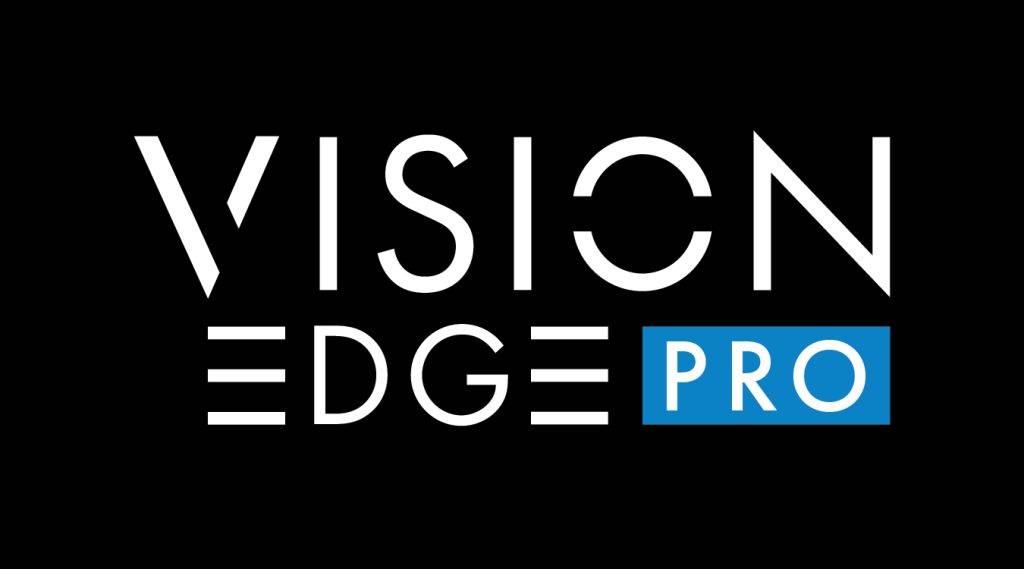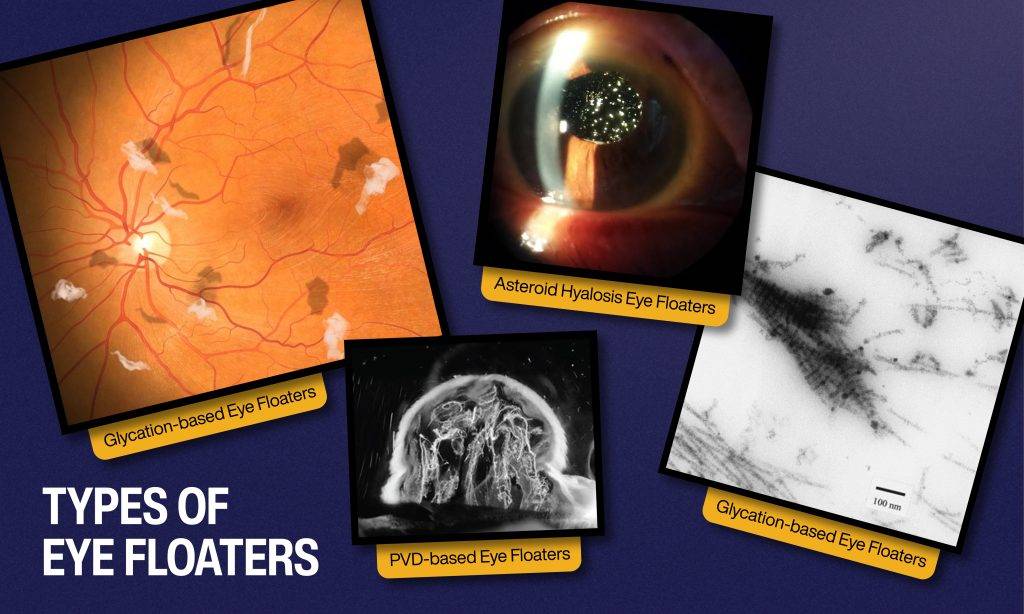- Last Updated
Eye Health

Written by MacuHealth
Reviewed by Jim Stringham, Ph.D.
According to the CDC, the prevalence of age-related macular degeneration (AMD) increases with age from 2% among people aged 40 to 44 to 46.6% among people aged at or greater than age 85. Data such as this can be scary, but there is a lot that you can do to reduce the risk of developing AMD and potentially slow its progression. While macular degeneration doesn’t always transition to vision loss, it can affect everyday tasks like reading, watching TV, and even recognizing the face of a loved one.
A macular degeneration diagnosis can be overwhelming, and many people want to know: how fast does macular degeneration progress? That’s why we’ve put together this macular degeneration progression timeline to help people categorize where they stand, what to expect in the future, and what they can do about it.
In this article, we’ll take an in-depth look at each of the stages of macular degeneration, discuss what to expect, and answer common questions. Read on for more information.
What Is Macular Degeneration?
Age-related macular degeneration is a progressive, neurodegenerative disease with an average age beginning around roughly 65 years old. At age 70, around 10 percent of individuals in the United States have an AMD diagnosis. It impacts central vision, with symptoms ranging from blurred or distorted eyesight to light sensitivity and difficulty seeing in low-light situations (e.g., driving at night). There are two main types of AMD: dry macular generation and wet macular degeneration. Before we delve into the macular degeneration progression timeline, let’s look at each in more detail.
What is Dry Macular Degeneration?
Dry AMD is the most common type of macular degeneration. This stage accounts for 80% to 90% of all cases. Healthcare professionals can spot the symptoms of dry macular degeneration as a progressive collection of yellowish spots or deposits called drusen that form under the retina.
In the case of people with dry macular degeneration, the biochemical pathways in the retina become dysfunctional, which leads to the buildup of the drusen in the retina. The buildup of drusen in the eye and biochemical pathways gives rise to excessive oxidative stress and inflammation. This can lead to irreversible damage to the retina’s light-sensing cells, which ushers in the aforementioned visual issues.
Patients suffering from dry macular degeneration experience central vision distortion and loss of vision over time. The dry macular degeneration progression timeline can be categorized into three stages, and it typically takes approximately five to ten years to reach the final stages.
The probability for developing dry AMD is determined primarily by genetics and lifestyle factors, like diet and exercise. The risk factors of dry macular degeneration include the following:
- Age – It is common for symptoms of dry macular degeneration to appear in patients over 60 years old.
- Family history – Genetics can play a part in dry macular degeneration as it has a hereditary component. There are specific genes that are linked with this condition. Additionally, dry macular degeneration is more common in people of Caucasian descent.
- Obesity – Obesity can increase the chances of dry macular degeneration and the early stages of the condition and can lead to more advanced AMD cases.
- Cardiovascular diseases – Heart or blood ailments can also cause patients to increase their chances of developing dry macular degeneration.
- Smoking – Tobacco products can significantly increase the risk of developing dry macular degeneration.
- Exercise – Regular, vigorous exercise is found to reduce the risk of AMD significantly. Sedentary behavior, therefore, is an important risk factor.
Dry macular degeneration can also lead to wet macular degeneration, the more severe form of the disease (more on this in the next section).
What is Wet Macular Degeneration?
Wet AMD, or late-stage AMD, is characterized by a more severe disease process involving leakage of blood into the retina and the growth of abnormal blood vessels. This ultimately results in the destruction of the light-sensitive retina and central visual blindness. This stage of AMD is relatively rare compared to dry AMD. Out of all macular degeneration conditions, wet macular degeneration accounts for approximately 20% of known cases. However, it is common for wet AMD to arise out of dry AMD.
Wet AMD often results in severe sight impairment or loss, which may happen rapidly. But exactly how quickly does wet macular degeneration progress? Although there is some variability, the wet macular degeneration timeline can take several months to progress from when symptoms appear to significant degeneration. In some cases, when left untreated, wet AMD can take mere days to advance to late-stage disease.
The factors that can increase the risk of wet macular degeneration are the same as dry macular degeneration. However, wet macular degeneration conditions can develop in a number of ways compared to dry macular degeneration. The different development causes are:
- Vision loss caused by the irregular flow of blood vessel growth can cause leakages of blood and fluid from under the retina.
- Vision loss caused by the buildup of fluid in the back of the eye. Fluid leaks build up in the back of the eye, resulting in the distortion or loss of vision.
What to Expect During the Macular Degeneration Progression Timeline
If you or a loved one has recently been diagnosed with macular degeneration, you may be wondering how quickly does macular degeneration progress and what to expect during each stage. As mentioned earlier, the dry macular degeneration timeline can take an average of five to ten years. But if you have the wet form of the disease, your timeline might be shorter.
Below are some common symptoms that affect patients diagnosed with macular degeneration:
- Visual distortions such as straight lines looking bent or crooked.
- Reduced central vision out of a single or both eyes.
- Need for brighter lights when performing everyday activities, such as performing close-up work or reading.
- Difficulty adapting to dark rooms or light levels, including movie theaters or dimly lit restaurants.
- Increased blurriness and difficulty reading printed texts and words.
- Difficulty recognizing people’s faces.
- Well-defined blurry spot or a blind spot that does not go away.
These symptoms can occur throughout the three different stages of macular degeneration: early, intermediate and advanced. Each one of these stages has different effects on the patient’s vision. Let’s look at each stage of macular degeneration in more detail.
Early Stage Macular Degeneration
Early macular degeneration can also be considered pre-macular degeneration as there are minimal to no side effects, like vision loss or blurriness. Optometrists can discover this early stage of macular degeneration through a routine eye exam by checking the level of drusen building up in the retina. The buildup of drusen can happen long before symptoms appear, which is why it’s important to schedule regular eye exams.
Once an optometrist detects an early indication of drusen buildup, they will tell patients to come back for frequent eye exams to monitor their condition or check for any signs of macular degeneration progression. They may also recommend a change in diet or supplementation with key nutrients to help slow the progression of AMD. Even if the patient has no symptoms, it is crucial that they follow up with these appointments and follow all instructions.
Intermediate Stage Macular Degeneration
The intermediate stage is when AMD patients often begin to experience symptoms, including vision loss, blurriness and requiring more light to perform daily activities. An intermediate-stage macular degeneration diagnosis is based on the number and size of drusen in the eye. During this stage, the level of drusen buildup starts to advance, resulting in an increased risk of progressing to the advanced stage and experiencing life-changing symptoms.
Diagnoses for the intermediate stage require the presence of multiple medium-sized drusen or at least one large drusen in one eye or both eyes of the patient. It also requires that the pigmentation of the retina changes to become “splotchy” and not uniform.
Advanced Stage Macular Degeneration (Wet AMD)
This is the final stage of macular degeneration. By this point, patients have probably experienced almost all of the symptoms of the condition, including vision loss, blurriness, blind spots and leaking of fluids.
As the disease progresses, patients can expect blind spots to occur that block the central part of their vision. The result is that patients can have difficulty reading, recognizing faces, telling time on a clock – pretty much anything that requires sharp central vision. Patients may still be able to use their peripheral vision (side vision), though they may be classified as legally blind.
Macular Degeneration FAQs
Living with macular degeneration can be frightening and stressful, and chances are you have questions. Let’s go over some of the most frequently asked questions regarding this common age-related eye condition.
Can you stop the progression of macular degeneration?
At the time of this article’s writing, there is AMD has no cure. However, there are ways to improve symptoms, including incorporating a healthy diet, regular exercise, quitting smoking, and taking supplements for macular degeneration.
Can macular degeneration cause blindness?
The short answer is yes, but not fully. Even the worst-case scenarios of advanced macular degeneration typically only lead to central vision loss, not complete blindness. But if you experience extensive vision loss, how long does it take to go blind from macular degeneration? It typically takes approximately 5-10 years to progress from early-stage macular degeneration to the advanced stages. In advanced stages, vision loss may be severe enough that patients may be legally considered blind and should not drive or use machinery.
What is high myopia macular degeneration?
High myopia macular degeneration can occur if you suffer from extreme myopia (i.e., short-sightedness). Because those with high myopia are at increased risk for AMD, most people with this condition want to know: how fast does high myopia macular degeneration progress? Because it’s still a form of macular degeneration, it takes approximately ten years to progress to advanced stages.
Minimize Your Risk of Macular Degeneration
It’s important to schedule regular eye examinations with an experienced optometrist to
minimize your risk of developing AMD and causing the disease to progress. In addition, it’s important to eat a healthy diet (including lots of fruits and vegetables), engage in regular exercise, refrain from smoking, and take high-quality carotenoid supplements from a trusted retailer.
MacuHealth’s scientifically formulated eye supplements are clinically proven to protect your vision as you age, thanks to their research-backed ingredients and ability to rebuild macular pigment. MacuHealth’s formulations contain all three carotenoids vital to maintaining eye health (Meso-Zeaxanthin, Lutein and Zeaxanthin). Shop our eye vitamins for macular degeneration today!












